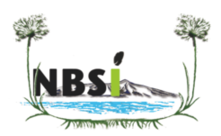Fringing papyrus
Naivasha is a biodiversity hotspot mainly due to its extensive riparian vegetated fringe comprising floating and riparian papyrus swamps and riparian acacia forests. The frequent alternance of high and low water levels ensures a dynamic riparian zone development and prevents the establishment of stable infrastructure and human settlements. More than 350 bird species are hosted in Naivasha's extensive riparian zone, specialising in aquatic, riparian and terrestrial niches. The papyrus fringe achieves its greatest width at the so-called North Swamp situated in front of the Malewa River delta.
The papyrus fringe is an important asset protecting lake water quality from residential and farming effluents. In the 1970s, John Gaudet (1975, 1976, 1979) conducted a series of observations in Naivasha and in Ugandan swamps to describe the swamp's capacity to retain nutrients and other mineral constituents; recently he published a monograph entitled "Papyrus: The Plant that Changed the World" (Gaudet 2014), in which there are several references to Lake Navasha.
At Lake Naivasha, the riparian papyrus swamp undergoes frequent changes in width. During protracted rainy seasons, the water level tends to rise significantly -as happened in 2011- causing a flooding of lake fringing papyrus.
Several stands tend to die off as papyrus withstands only moderate water level change (up to 1.2-1.3 m); some stands are able to become detached from the ground by forming floating islands, which become soon colonised by other plants and by invertebrates. Papyrus island complexes can cover several hectares; smaller units tend to travel across the entire lake being pushed by winds. This mechanism favours the re-establishment of the papyrus fringe at sites that may have become barren due to water level effects or by being degraded due to inland activities.
Cyperus papyrus (Cyperaceae) represents probably the largest aquatic macrophyte and one of the fastest growing higher organisms on the planet. Despite the lack of an extensive papyrus exploitation industry, such as the one that can be observed on the shores of Lake Victoria where papyrus is extensively used for weaving mats, stakeholders at Naivasha are appreciative of the ecosystem services provided by papyrus (Morrison et al. 2013), such as offering breeding sites and refuge for fishes and birds.
Unsustainable uses of papyrus include: cutting for burning, using as cattle fodder. Papyrus management options are discussed by Morrison and Harper (2009).



